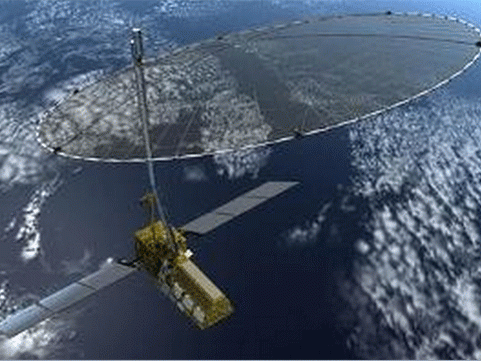Nasa-Isro Synthetic Aperture Radar
From the drawing board to the review room: Indian Space Research Organisation (Isro) and US' National Aeronautics and Space Administration (Nasa), who were in talks to co-develop a dual frequency synthetic aperture radar late last year. Now, the talks have converted into a project, with Nasa even having cleared Isro's instrument design.

From the drawing board to the review room: Indian Space Research Organisation (Isro) and US' National Aeronautics and Space Administration (Nasa), who were in talks to co-develop a dual frequency synthetic aperture radar late last year. Now, the talks have converted into a project, with Nasa even having cleared Isro's instrument design.

The project, which Nasa terms Nasa-Isro Synthetic Aperture Radar (Nisar) will use advanced imaging that will provide an unprecedented, detailed view of the earth. "It is being designed to observe and take measurements of some of the planet's most complex processes, including ecosystem disturbances, ice-sheet collapse, and natural hazards such as earthquakes, tsunamis, volcanoes and landslides," Nasa's Jet Propulsion Laboratory has said.
TOI first reported about the two agencies being in talks for this in its November 11, 2013 edition under the title 'Isro, Nasa in talks to develop radar satellite'.
This was just after the initial mission concept review was done on October 15-16, 2013. On March 19, 2014, the project passed the crucial Key Decision Point-A (KDP-A) review, which, is an important stage in Nasa's Exploration Systems Mission Directorate's project life cycle module.
Following this, the agency will begin reviewing the critical design review, systems integration and operational readiness. Subsequent to this, on March 27, 2014, Isro's instrument design passed Nasa's review, which sources said, is another level of acceptability and a sign that the project's a 'go ahead'.
The satellite will not only be able to study natural hazard and ecosystem disturbances, but will also enhance remote sensing by improving the resolution of images.
"Isro also has on the drawing board development of remote sensing satellites with more autonomy, enabling them to identify areas of focus," a scientist said.
In what's being termed a first of its kind endeavour, Nisar will be able to operate in two frequencies, both in bands lower than KU-Band or AA-Band. While Isro will take care of the S-band radar, expected to have a 12-cm wavelength, Nasa will supply the 24-cm wavelength L-band radar.
